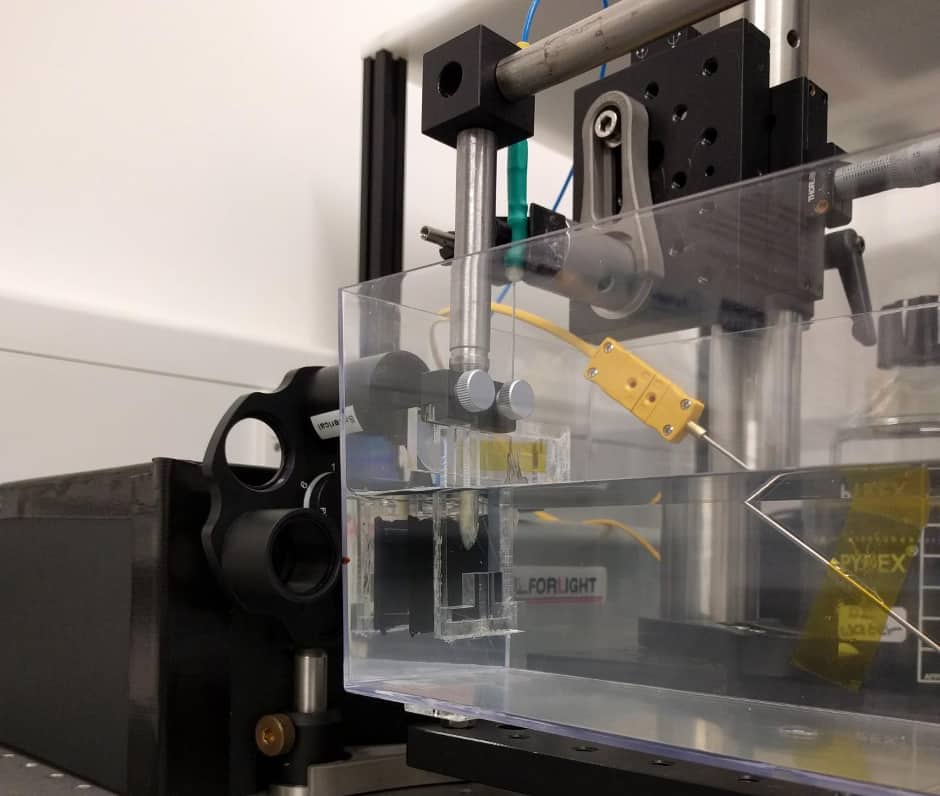Optical components offer extra flexibility in ultrasound applications
A new ultrasound system that uses optical components rather than electronic components could give doctors more flexibility in how they use ultrasound.

In Biomedical Optics Express researchers in the UK demonstrate the use of an all-optical ultrasound imager for video-rate, real-time 2D imaging of biological tissue. The achievement is said to be an important step toward making all-optical ultrasound practical for routine clinical use.
Because they require no electronic components in the imaging probe, all-optical ultrasound systems could be used simultaneously with magnetic resonance imaging (MRI) scanners, giving doctors a more comprehensive picture of the tissues around an area of interest.
"All-optical ultrasound imaging probes have the potential to revolutionise image-guided interventions," said Erwin J Alles, from University College London’s faculty of engineering science. "A lack of electronics and the resulting MRI compatibility will allow for true multimodality image guidance, with probes that are potentially just a fraction of the cost of conventional electronic counterparts."
Light beam scanning mirrors built into the device are said to increase image quality and make it possible to acquire images in different modes. According to UCL, this would allow doctors to rapidly toggle between modes on a single instrument. Acquiring different types of images using conventional ultrasound systems typically require separate specialised probes.
Register now to continue reading
Thanks for visiting The Engineer. You’ve now reached your monthly limit of news stories. Register for free to unlock unlimited access to all of our news coverage, as well as premium content including opinion, in-depth features and special reports.
Benefits of registering
-
In-depth insights and coverage of key emerging trends
-
Unrestricted access to special reports throughout the year
-
Daily technology news delivered straight to your inbox










Water Sector Talent Exodus Could Cripple The Sector
Well let´s do a little experiment. My last (10.4.25) half-yearly water/waste water bill from Severn Trent was £98.29. How much does not-for-profit Dŵr...